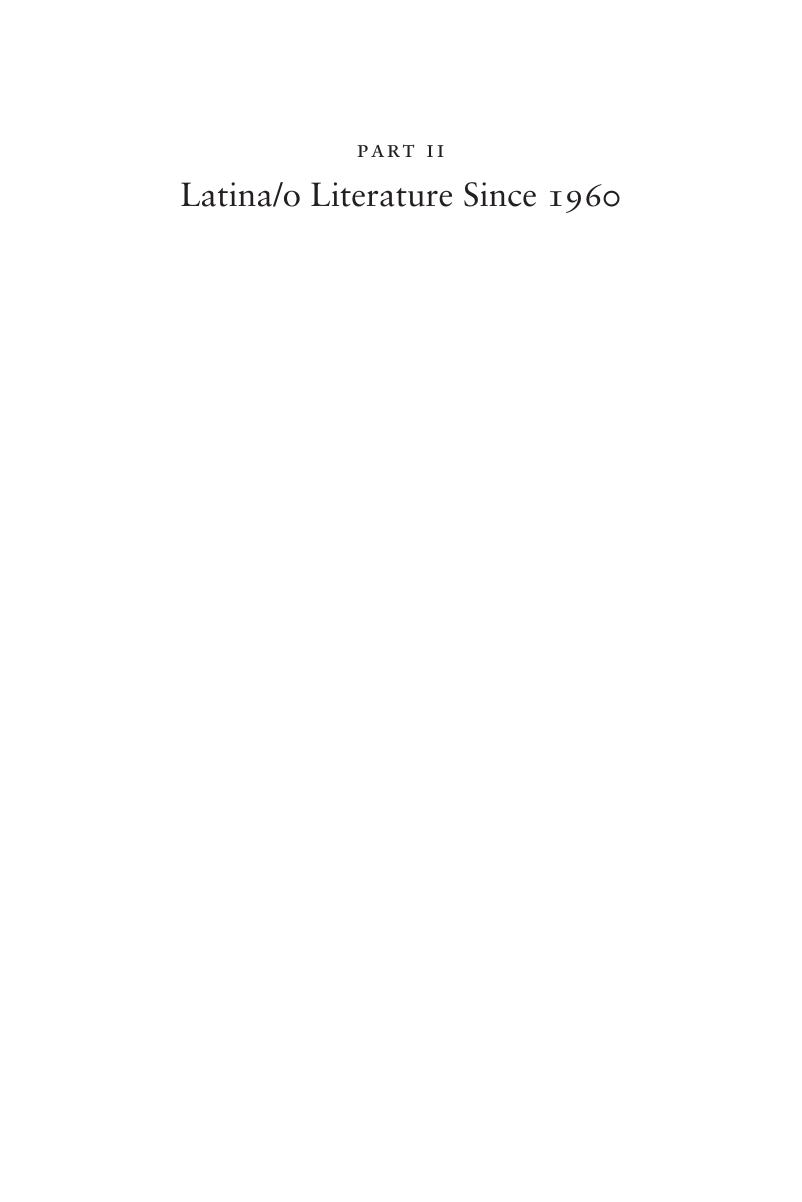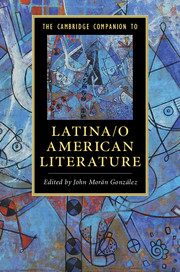Book contents
- The Cambridge Companion to Latina/o American Literature
- The Cambridge Companion to Latina/o American Literature
- Latina/o American Literature
- Copyright page
- Dedication
- Contents
- Notes on Contributors
- Book part
- Chronology
- Introduction
- Part I Early Trans-American Contacts and Conflicts
- Part II Latina/o Literature Since 1960
- Part III Critical Methodologies and Themes
- Index
- Cambridge Companions to ...
- References
Part II - Latina/o Literature Since 1960
Published online by Cambridge University Press: 05 June 2016
- The Cambridge Companion to Latina/o American Literature
- The Cambridge Companion to Latina/o American Literature
- Latina/o American Literature
- Copyright page
- Dedication
- Contents
- Notes on Contributors
- Book part
- Chronology
- Introduction
- Part I Early Trans-American Contacts and Conflicts
- Part II Latina/o Literature Since 1960
- Part III Critical Methodologies and Themes
- Index
- Cambridge Companions to ...
- References
Summary

- Type
- Chapter
- Information
- The Cambridge Companion to Latina/o American Literature , pp. 55 - 144Publisher: Cambridge University PressPrint publication year: 2016

